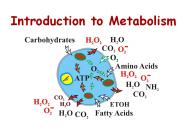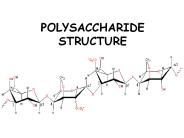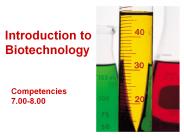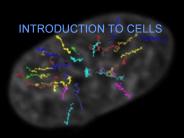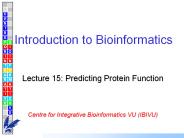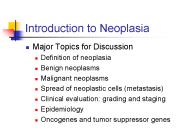Enzyme Introduction PowerPoint PPT Presentations
All Time
Recommended
. What are enzymes? How they work in biological reactions and living organisms? What are the applications of enzymes in biotechnology and medical research? Here, you can find what we have summarized.
| PowerPoint PPT presentation | free to download
Introduction to enzymes Enzyme biological catalyst. Permit reactions to go at conditions that the body can tolerate. Typically are very large proteins.
| PowerPoint PPT presentation | free to view
Biochemists study the chemical reactions that make life possible ... Enzymes poise all the reactants in a arrangement that allows the reaction to ...
| PowerPoint PPT presentation | free to view
Chapter 13 Introduction to Enzymes Read pages 459 466 & 470 Chymotrypsin with bound substrate Enzymes are the agents of metabolic function Enzymes endow cells ...
| PowerPoint PPT presentation | free to download
C Enzymes C1 Introduction to enzymes C2 Thermodynamics C3 Enzyme kinetics C4 Enzyme inhibition C5 Regulation of enzyme activity Enzyme as catalysts ...
| PowerPoint PPT presentation | free to view
Spontaneous Reactions: thermodynamically or energetically favorable ... Hydrolases: hydrolysis reactions (cleavage and introduction of water) ...
| PowerPoint PPT presentation | free to view
Factors Affecting Rates of Enzyme Catalyzed Reactions. 1. Rate affected by Enzyme ... Target: myo-inositol monophosphatase. Uncompetitive Inhibition. Summary ...
| PowerPoint PPT presentation | free to view
AP Biology Chapter 6: An Introduction to Energy and Enzymes
| PowerPoint PPT presentation | free to view
Effect of substrate concentration and enzyme inhibitor on enzyme activity Determination of Alkaline Phosphatase activity Introduction: Phosphatases are enzymes which ...
| PowerPoint PPT presentation | free to download
Enzymes & Food technology Prof.Dr :Fahim Shaltout . Enzymes & food Technology Introduction Enzymes present every where in nature & In ...
| PowerPoint PPT presentation | free to download
Enzymes Introduction to enzyme structure and function, and factors involving their actions and pathways. What is an enzyme? Almost all enzymes are proteins that act ...
| PowerPoint PPT presentation | free to download
Enzyme 1 Enzyme 2 Enzyme 3 C B A D Reaction 1 Reaction 3 Reaction 2 Product Starting molecule * Climbing up converts the kinetic energy of muscle movement to ...
| PowerPoint PPT presentation | free to download
Outline of Enzymes Introduction - Features of enzyme catalysis Enzyme kinetics - Models for simple enzyme kinetics - Effect of pH and Temperature Immobilized Enzyme ...
| PowerPoint PPT presentation | free to view
Introduction la Pharmacie M. Pourrat Service Pharmacie H pital Beaujon
| PowerPoint PPT presentation | free to download
Title: Introduction to enzymes Author: William R. Widger Last modified by: Glen Legge Created Date: 9/12/1998 6:36:47 PM Document presentation format
| PowerPoint PPT presentation | free to download
LES ENZYMES Acteurs du m tabolisme cellulaire INTRODUCTION Contexte historique 1750-1760, R aumur et Spallanzani mee activit enzymatique exp rience sur suc ...
| PowerPoint PPT presentation | free to download
Introduction to Studying DNA Chapter 4 Describe the structure and function of DNA and explain the process by which it encodes for proteins Differentiate between ...
| PowerPoint PPT presentation | free to download
Title: Introduction to enzymes Author: William R. Widger Last modified by: jaljamalr Created Date: 9/12/1998 6:36:47 PM Document presentation format
| PowerPoint PPT presentation | free to view
Enzyme cofactors Jana Novotna Content of lectures Introduction into cofactors explanation of the differences between cofactors Types of cofactors (enzymatic reactions ...
| PowerPoint PPT presentation | free to view
introduction to virology
| PowerPoint PPT presentation | free to download
Introduction to Immunology 1: The Need The Ubiquitous Enemy Microbes Extracellular (survive on animals and plants by releasing digestive enzymes directly and ...
| PowerPoint PPT presentation | free to view
Introduction to Animal Science Manganese Involved with enzyme systems of estrus, ovulation, fetal development, udder development, milk production, and growth.
| PowerPoint PPT presentation | free to view
CP504 Lecture 3 Enzyme kinetics and associated reactor design: Introduction to enzymes, enzyme catalyzed reactions and simple enzyme kinetics
| PowerPoint PPT presentation | free to view
mechanical removal of mucus from lungs ii. breathing therapy iii. enzyme therapy Genetics ... Failure to produce enzyme which breaks down this fat ...
| PowerPoint PPT presentation | free to download
nefrology introduction
| PowerPoint PPT presentation | free to download
INTRODUCTION BIOCHEMISTRY An Introduction to the Chemistry of Life for Biology Students * DR SEEMAL JELANI Everything is made up of atoms. Living things are made up ...
| PowerPoint PPT presentation | free to download
CP504 ppt_Set 02 Enzyme kinetics and associated reactor design: Introduction to enzymes, enzyme catalyzed reactions and simple enzyme kinetics
| PowerPoint PPT presentation | free to view
1. I. Introduction to Hypertension ... D. Angiotensin converting enzyme (ACE) Inhibitors. e.g. captopril, enaolopril, lisinopril. used to treat hypertension ...
| PowerPoint PPT presentation | free to view
Focusing on life science research areas, Creative Enzymes has been committed to provide professional information for our customers and researchers.
| PowerPoint PPT presentation | free to download
Introduction to neuroscience
| PowerPoint PPT presentation | free to view
Introduction to Metabolism
| PowerPoint PPT presentation | free to download
Custom Proteomic Solutions. GenWay Introduction. Unique ... Partitioning of Top-12 highly-abundant proteins from human and other primate serum or plasma ...
| PowerPoint PPT presentation | free to view
The food enzymes market size is estimated to be valued at USD 2.2 billion in 2021 and is projected to reach USD 3.1 billion by 2026, recording a CAGR of 6.4%, in terms of value. Growing environmental concerns, urbanization, increasing disposable income, and advancements in R&D activities led to the growth of food enzymes market. In addition, advancements in technology, such as enzyme engineering and the introduction of genetically engineered enzymes, have boosted the growth of the food industry. Factors such as the multifunctional benefits of food enzymes across various applications and technological innovations to reduce the consumption of chemicals contribute to the growth of the global market.
| PowerPoint PPT presentation | free to download
Introduction to Bioinformatics Molecular Biology Primer *
| PowerPoint PPT presentation | free to download
Introduction to Dermatology By Stacey Singer-Leshinsky R-PAC What is? Dermatology? Dermatologist? Functions of the Skin Sensation- Immune function ...
| PowerPoint PPT presentation | free to download
Introduction to Metabolism Ch. 8 AP Biology
| PowerPoint PPT presentation | free to download
Introduction to Biotechnology What is Biotechnology? Biotechnology is the manipulation of living organisms and organic material to serve human needs.
| PowerPoint PPT presentation | free to view
DMK Enzyme Therapy, a revolutionary skincare approach designed to rejuvenate and revitalize your skin from within. DMK Enzyme Therapy is a unique skin treatment method that harnesses the power of enzymes to promote natural skin functions, including oxygenation and cellular regeneration.
| PowerPoint PPT presentation | free to download
Title: Introduction to Polysaccharides Author: Conny Jumel Last modified by: University of Nottingham Created Date: 9/3/2002 10:09:07 AM Document presentation format
| PowerPoint PPT presentation | free to download
Introduction to Biotechnology Competencies 7.00-8.00 Problems with Biotechnology in Agriculture Problems with Biotechnology Transfer of genes found in transgenic ...
| PowerPoint PPT presentation | free to download
Introduction to biotechnology Haixu Tang School of Informatics Biotechnology Cell technology Isolating cells Growing cells in culture Fractionating cells Molecular ...
| PowerPoint PPT presentation | free to download
Enzymes, used as processing aids, in baking are the key differentiation factors for bakery improver manufacturers and a great source of product innovations and differentiation. The market for baking enzymes is expected to experience a growth of 8.2% from 2013 to 2019. The estimation is a result of regular research and development in the industry with widening application of baking enzymes, which are mainly involved in the conversion of carbohydrates to simple sugars, longer fragment protein chains to shorter fragment protein chains, and hydrolysis of fats (lipids).
| PowerPoint PPT presentation | free to download
INTRODUCTION TO CELLS INTRODUCTION TO CELLS Robert Hooke Is credited with discovering the microscope. He first used the word cell . Anton van Leeuwenhook The ...
| PowerPoint PPT presentation | free to view
Introduction to Toxicology. Richard W. Stair, MD, FACEP. Toxic Trivia ... Directed Toxicology Tests. Hepatic Toxin LFT's, NH4, glu, coags, amylase ...
| PowerPoint PPT presentation | free to view
C E N T R F O R I N T E G R A T I V E E B I O I N F O R M A T I C S V U Introduction to Bioinformatics Lecture 15: Predicting Protein Function Centre for Integrative ...
| PowerPoint PPT presentation | free to download
Introduction to Neoplasia
| PowerPoint PPT presentation | free to download
INTRODUCTION TO VIROLOGY
| PowerPoint PPT presentation | free to view
Chapter 1. Introduction to Genetics. From Mendel to DNA ... Became the foundation for genetics as he determined several key concepts in ...
| PowerPoint PPT presentation | free to view
Introduction to Biochemistry Unit 3, Lesson 1 Organic Compounds Monomers (single units) Polymers (units joined together) Isomers Carbohydrates Used for Energy ...
| PowerPoint PPT presentation | free to view
Marine enzymes market valuation from the proteases product segment is likely to surpass USD 125 million by 203
| PowerPoint PPT presentation | free to download
Zoology : Introduction to Animals (Ch.27) Zoology is the study of animals. ... Your zoology journal should have the following in it: Symmetry Activity(pg.599) ...
| PowerPoint PPT presentation | free to view
Concernant les mol cules suivantes, quelle est la r ponse qui. propose une association de ... d) FAUX : elle n cessite l'intervention des deux enzymes. ...
| PowerPoint PPT presentation | free to view
Enzymes in Body Fluids Lecture outline Dr. Essam H. Jiffri * * Upon completion of this chapter, the following will be covered: - Introduction - Factors affecting ...
| PowerPoint PPT presentation | free to download
modified bacteria that secrete enzymes to help dissolve oil spills in ... cloning ... or resurrecting extinct species using cloning techniques. ...
| PowerPoint PPT presentation | free to view
Osteoarthritis Rickets children Paget s Osteomalacia (adult rickets) Title: Introduction to Bones Author: ghc Last modified by: ghc Created Date:
| PowerPoint PPT presentation | free to view
Introduction to Virology. I. Objectives. What is a virus. How do viruses multiply ... Differences in multiplication due to differences in genome organization ...
| PowerPoint PPT presentation | free to view































